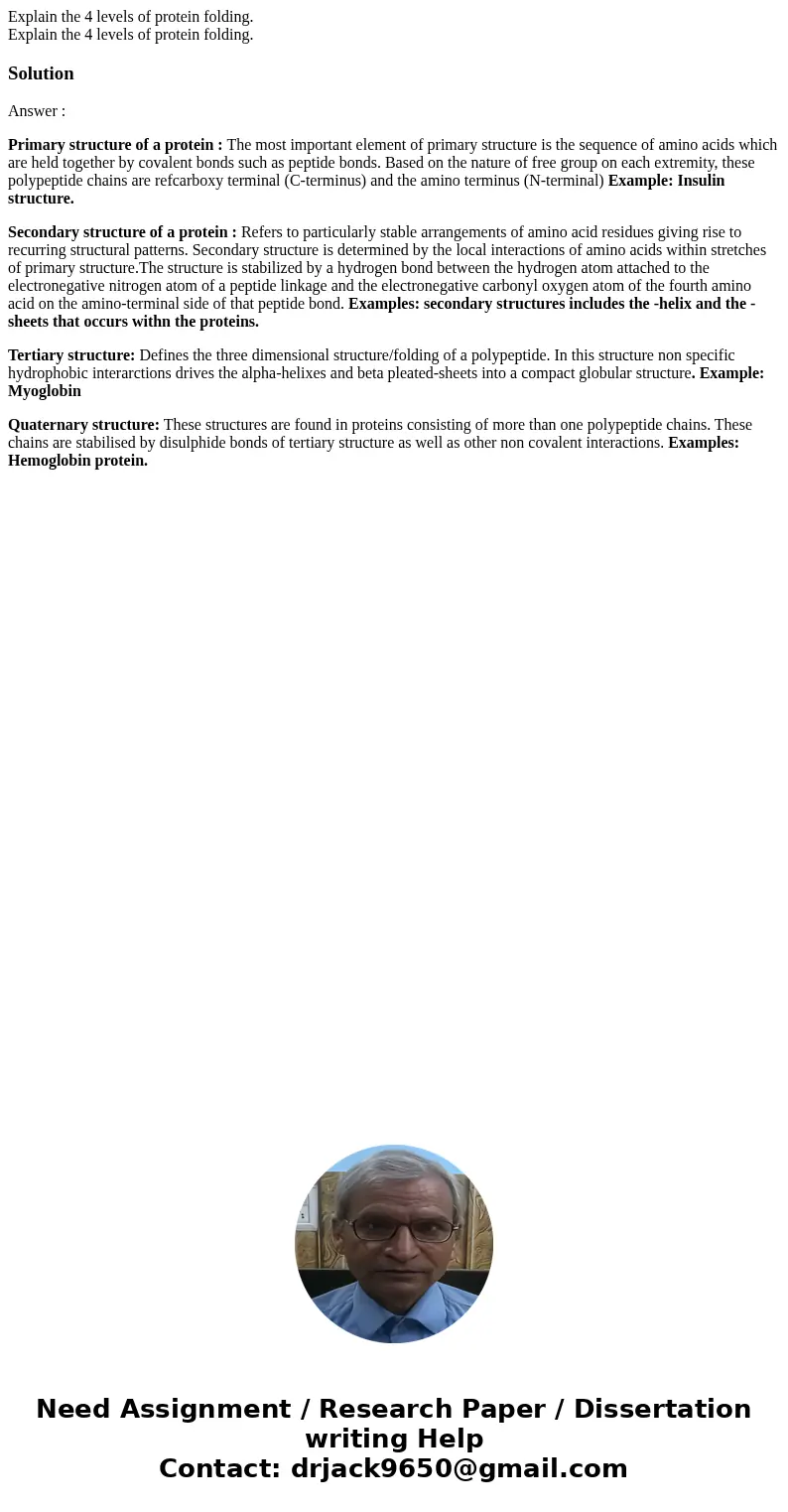Explain the 4 levels of protein folding Explain the 4 levels
Solution
Answer :
Primary structure of a protein : The most important element of primary structure is the sequence of amino acids which are held together by covalent bonds such as peptide bonds. Based on the nature of free group on each extremity, these polypeptide chains are refcarboxy terminal (C-terminus) and the amino terminus (N-terminal) Example: Insulin structure.
Secondary structure of a protein : Refers to particularly stable arrangements of amino acid residues giving rise to recurring structural patterns. Secondary structure is determined by the local interactions of amino acids within stretches of primary structure.The structure is stabilized by a hydrogen bond between the hydrogen atom attached to the electronegative nitrogen atom of a peptide linkage and the electronegative carbonyl oxygen atom of the fourth amino acid on the amino-terminal side of that peptide bond. Examples: secondary structures includes the -helix and the -sheets that occurs withn the proteins.
Tertiary structure: Defines the three dimensional structure/folding of a polypeptide. In this structure non specific hydrophobic interarctions drives the alpha-helixes and beta pleated-sheets into a compact globular structure. Example: Myoglobin
Quaternary structure: These structures are found in proteins consisting of more than one polypeptide chains. These chains are stabilised by disulphide bonds of tertiary structure as well as other non covalent interactions. Examples: Hemoglobin protein.

 Homework Sourse
Homework Sourse